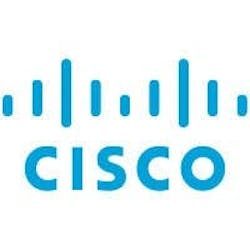Cisco cuts 5% of its workforce as telco, cable operators continue inventory digestion
Cisco will reduce 5% of its workforce, translating into over 4,000 positions when its enterprise and service provider customers are being more cautious about spending and correcting the inventory created during the COVID-19 pandemic.
News of the vendor’s layoffs emerged in a Reuters report earlier this week.
The company forecasted third-quarter revenue to be between $12.1 billion and $12.3 billion, missing analysts' projections of $13.1 billion.
Chuck Robbins, CEO of Cisco, told investors during its earnings call that the telco and cable industry continues to be challenging.
"We continue to see weak demand with our telco and cable service provider customers,” he said. “This industry has seen significant pressure, and they are adjusting deployment phasing, which is weighing on our business outlook.”
Quarterly challenges
Cisco reported revenue challenges within several of its product lines in its second quarter of fiscal year 2024.
In its customer markets, service provider and the cloud were down 40%, the enterprise was down 6%, and the public sector was down 5%.
Total product revenue was $9.2 billion, down 9%, and service revenue was $3.6 billion, up 4%. Networking, its largest product category, was down 12%.
“We saw declines across switching, wireless and routed optical networking driven primarily by weakness in the enterprise and service provider and cloud markets,” said Scott Herren, CFO of Cisco.
For the quarter, Cisco’s total revenue was at the high end of its guidance range at $12.8 billion, down 6% year-over-year.
Inventory digestion headwinds
Like other vendors in the networking space, Cisco has been weathering ongoing inventory digestion headwinds.
Robbins said inventory is “largely an enterprise and a service provider issue.”
Despite the near-term challenges, analysts expect the telecom and cable industry to resolve its inventory issues by either the second half of 2024 or early 2025.
“We think that the service provider telco and cable operators will begin investing again,” Robbins said. “We originally had anticipated that they would begin to invest in the second half of this year, and we no longer believe that to be true.”
Enterprises is creating a similar situation.
Based on conversations Cisco has had with its customers, the company expects they are 1-2 quarters away from when its enterprise customers are fully implementing their inventory, which was longer than expected.
He pointed out that “cloud providers got probably more than 20-plus weeks of inventory that they're working through right now as they built up when the lead times were so long.”
In the enterprise market, Cisco is finding that its Meraki wireless activations are going quicker than its switching segment. “Using our Meraki business as a proxy for our wider enterprise networking portfolio, we expect the current implementation of shipped products to be broadly complete by the end of fiscal 2024,” Robbins said.
Driving AI
As it continues to wade through challenges in its traditional lines of business, Cisco has high hopes for Artificial Intelligence (AI).
During the quarter, the company announced several new capabilities across its Security, Collaboration and Observability portfolios, all of which leverage AI.
The vendor also advanced its partnership with NVIDIA to offer enterprises simplified, cloud-based and on-prem AI infrastructure. Enterprises will also get access to NVIDIA AI Enterprise software that supports the building and deployment of advanced AI and generative AI workloads.
Cisco and NVIDIA’s Ethernet networking-based solutions will be sold through Cisco’s global channel, offering professional services and support through partners who can help businesses deploy their GPU clusters via Ethernet infrastructure.
“We are clear beneficiaries of AI adoption, and this partnership further demonstrates our central role in AI and the overall technology ecosystem,” Robbins said.
Robbins emphasized that “one of the key benefits is leveraging our enterprise go-to market and our global ecosystem and partner community.”
About the Author
Sean Buckley
Sean is responsible for establishing and executing the editorial strategy of Lightwave across its website, email newsletters, events, and other information products.


